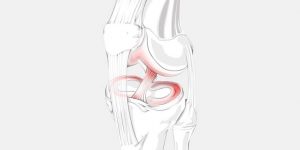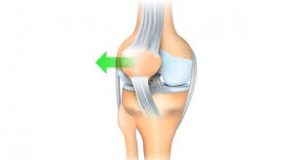You may hear occasional popping sound , snaps and crackles when you bend or straighten your knees, when you walk / go up and down stairs.

Doctors usually call this crackling sound crepitus
One explanation for why this happens is osteoarthritis, but there are many other causes.
Dr Shriram krishnamoorthy, Consultant Orthopaedician, MGM Healthcare explains that noisy knees aren’t a problem. However, if you have associated pain it may need a visit to the doctor
Crepitus in the knees is different from crepitus or crackling in the lungs, which can be a sign of a respiratory problem.
Knee joint
The knee works like a large hinge similar to the door hinge . It consists of bones, cartilage (the joint lining), the synovium (the tissue that is a like a balloon surrouding the joint), and ligaments.
Causes
Crepitus happens for various reasons, apart from osteoarthritis.
Here are few of them
Gas bubbles
Over time, gas can build up in the areas surrounding the joint, forming tiny bubbles in the synovial fluid. When you bend your knee, some of the bubbles burst.

This is normal and happens to everyone from time to time. It doesn’t cause pain. Similar to making popping sounds in finger knuckle.

Ligaments
The ligaments and tendons around the knee joint may stretch slightly as they pass over a small bony lump. As they snap back into place, you may hear a clicking sound in the knee.

Patellofemoral instability
Everyone’s body is slightly different. The various tissues and components that make up the knee vary between individuals, either from birth or due to age, injury, or life events.
Your knees may flex more than another person’s, for example, or your kneecaps may move more freely.
These differences may make one person’s knees noisier than the other person.

Injury
Crepitus can also be a result of a trauma. Falling on your knee can result in damage to the kneecap or other parts of the knee joint.
Crepitus can be a sign of this kind of damage.
• Meniscus tears – are fairly common in people who play sports, jog, or run. A meniscus tear can cause crepitus as the joint moves.
• Chondromalacia patella is when you have damage to the under-surface cartilage covering the kneecap. You may notice a dull ache behind the kneecap, usually caused by overuse or injury.
• Patellofemoral syndrome or runner’s knee, starts when you put too much force on the patella. It happens before damage occurs in the joint surface of the patella, and it can lead to chondromalacia patella. This can involve a painful crunching and grating that you can see or hear when you move your knee.

Arthritis
Osteoarthritis can happen at any age, but it usually starts when people are in their 50s.
Also known as “wear and tear” degenarative condition, osteoarthritis commonly affects the joints you use most often and those that bear weight, such as the knees.
In osteoarthritis, mechanical stress and biochemical changes combine to break down the cartilage that cushions the joint over time. This causes inflammation and pain, and the joint may crackle and crunch.
6 Excercise to Manage Knee Osteoarthritis
Surgery
Knees can sometimes become more noisy after surgery. This may be due to minor changes that occur during the procedure itself or, in the case of joint replacement, features of the new joint.
Often, however, the sounds were there before, but people may notice them more after surgery because they’re more keenly observant during the post-op period.
While this can be worrying, a data of nearly 5,000 people concluded that having crepitus after a knee replacement didn’t impact people’s long-term outlook or quality of life after 3 years
